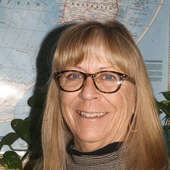- Research tips and McCook Brick Company- solid as a brick (12/16/24)
- Big Give appreciation and some railroad characters (11/15/24)
- George Randel becomes a landowner, gets married, and takes in a Buffalo Bill show (9/20/24)
- The memoirs of George F. Randel, early settler of Red Willow County (9/12/24)
- Vietnam War Memorial honors Nebraskans who served (6/13/24)
- McCook business promotions - just prior to 1893 stock market crash (5/30/24)
- Shall we dance? Meet you at the Gayway (12/8/23)
More about Marion, Neb.
Friday, April 7, 2017
Susan Doak
SW Nebraska
Genealogical Society
Athlene Clemons Martinís booklet about Marion and the area surrounding it was donated to our library quite some time ago. Iím going to share some more excerpts from it that paint a picture of how life was in the late 1800 and early 1900ís in Southwest Nebraska.
ďOne of the good pioneers was Hiram Plumb together with his large, sturdy family. They were among the first to brave the elements and endure hardships to establish a home on this virgin land that now abuts Marion on the west, adjacent to the Marion schoolhouse. Their only son was Thomas, who was then a lad about thirteen when they first arrived here on July 4, 1873. What interesting adventure stories and experiences the members of that family could, and did, relate! They recounted that a friendly Indian tribe took up their residence in the large bend of the creek just below their home during the winter of 1873. Young Tom soon made friends with the Indian children, and, before long, they were riding their ponies or fishing together along the banks of the Beaver Creek. This tribe was reputedly great beggars-especially for salt and soda. The white manís foods must surely have been quite a treat for them because of their limited bills of fare. One old-timer told about an Indian brave who came to his dugout and made signs of being hungry. He was given a watermelon, and he heartily and hastily ate it all right down to the very rind. Perhaps a dose of the soda might have helped him that night. (My Note: Baking Soda was, and still is, used for heartburn.) Another campground of the Redman was just east of the present Pew home, but, of course, the Indians were nomads and established their campsites where the hunting, fishing and the protection against the elements were the best.
Tom Plumbís poems and early experiences have been well covered by others with historical yens, so I wonít elaborate upon them, until later in my story, except to say that his parents homesteaded the land where Jack Galusha, a grandson of Hiram, still owns and lives in the house that his grandfather built in his later years. This is one of the few places where no one but the descendants of the original homesteaders has lived for over a century.Ē
Later in her writing she adds this information about Tom: ďIt was Tom, who as a young lad fishing along the Beaver Creek, found the remains of the Nelson (Buck) surveying party. He discovered some of their surveying instruments and part of an old wagon wheel that belonged to them. A historical marker, about three quarters of a mile west of Marion, relates the tragic story of that massacre of the ill-fated surveying party.Ē
I will finish with one more installment from Athleneís booklet next week and then it will be back in our library for research.
Nelson Buckís group was surveying the area in 1869. A map showing the old Indian trail that appears to follow quite closely what is now Highway 83 is available for research at the SWNGS library, 110 West C, Suite M-3. Our winter hours for open library are 1-4 PM on Wednesdays.

